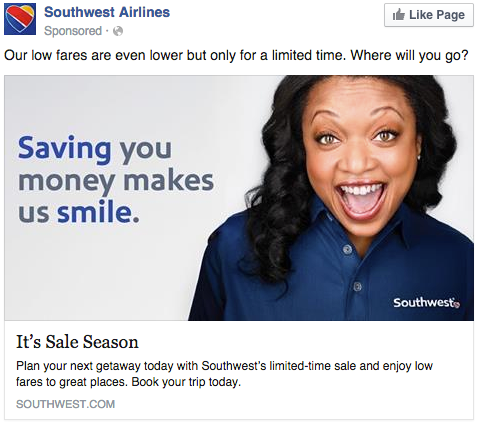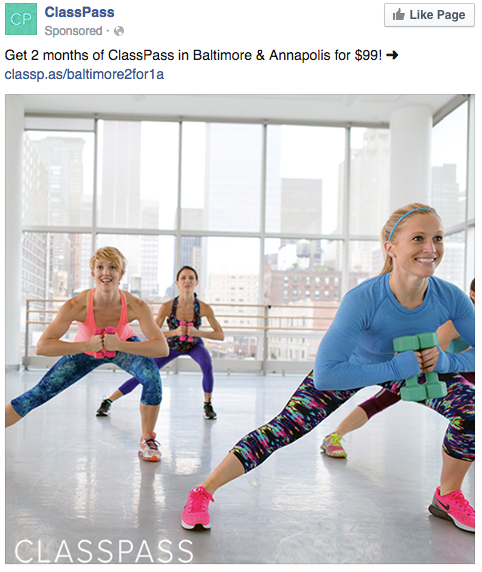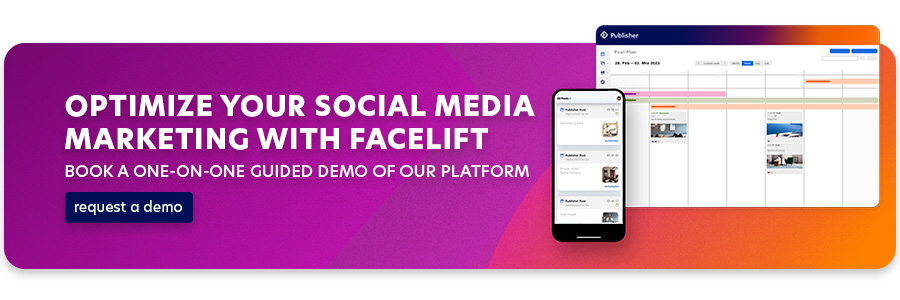Most advertisers know that Facebook is one of the most successful ways to get your product or brand noticed online. The success of Facebook ads alone speaks volumes, and these ads make up a very large part of Facebook's overall revenue.
This is ideal for anyone looking to increase their reach or sell products and services. However, Facebook Ads do not guarantee success!
A lot depends on how the ads are designed. If you want to get the most out of them and maximize your ROI, the following tips may be of interest to you!
1. Show people
Your ad has to compete with all the other content that appears in Facebook users' News Feeds, including a lot of content that comes directly from friends, family, and acquaintances. Understandably, content shared by friends and family often includes images and photos of people. To really be seen by users, your ads need to have a human touch: users are much, much less likely to see an image without people in it.
Show your products or services in action and emphasize that the people in the image are happy when using your product. Do the people look happy and/or satisfied?
Is it clear that your product brings people closer to a personal goal or solves a concrete problem? The direct benefit of your product or service needs to be immediately apparent: at the very least, you can be sure that prospects in the right demographic will engage with your ad and click on the link that takes them to your landing page.
2. Use the best possible resolution
The image you use is the visual heart of your Facebook ad: the better the quality of that image, the more likely it is to be noticed by users. Many users have become accustomed to Facebook Ads, making grabbing their attention with traditional images harder.
So regardless of the image you use, make sure it is of good quality. Better quality indicates that the ad is for a premium product or service: this factor alone makes it more likely that users will engage with your ad and that it will be noticed.
3. Keep images simple
Remember that your ad needs to get into people's news feeds and is competing with a lot of other non-advertising content that can do this more easily.
But this is no reason to give up. You can make sure that the people you are trying to reach are not further confused by not understanding the ad. Use clear images and photos that answer any questions your potential customers may have.
The quicker and easier it is to understand your Facebook ad, the sooner potential customers will begin to engage with it and its underlying purpose.
Simple images are more effective and get users to stop scrolling through their news feeds. This is especially important for mobile Facebook ads. The less complicated your ad is and the simpler and clearer the story your image tells, the more successful you will be.
4. Enhance your image with bold but simple text
Sometimes even the best picture is not enough. This is often the case when an additional call to action must be incorporated into the ad.
If your Facebook ad asks users to download something or take some other action, it is wise to incorporate this request into your image. However, this text should not dominate and take away from the image. If it does, it will have the opposite effect, and your ad is likely to be misunderstood (when Facebook approves an ad, the image cannot contain more than 20% text).
Your message should be fundamentally positive or designed to promote something. For this reason, words like "free" work well for the previously mentioned download options for Facebook ads. But don't be shy: if you have something to sell, say so with phrases like "Buy now!
5. Choose positive images when your products aren't attractive
Not every product looks good in a picture. For example, consider a cat litter box. This is a useful product for any household with a cat, but do you really think pictures of a litter box are helpful in promoting it? Whether or not the litter box has been used, most people just don't want to see those kinds of pictures.
But if you use a picture of a clean, groomed, happy cat, it's a different story! Of course, this kind of photo is perfect for a litter box ad because the image gives the impression that the cat looks the way it does because the litter box does the job perfectly. BTW, if you are selling cat litter boxes, this might be your chance cause I haven't found any with appealing ads.
The principle is simple: the visuals used to advertise products that are not "attractive" must create a positive association with the potential customer. Once this positive association is created, these products are much easier to sell on Facebook.
6. Enhance pictures and photos with the right headline and caption
Additional text can pay dividends in promotional materials as an image or photo becomes more integrated into the promotional process itself. But you also have other options when it comes to Facebook Ads.
The first thing people notice about an image in their news feed is that it catches their eye. However, people typically do not click on a post based on the image but rather on whether the rest of the ad matches the image.
As with any other Facebook post, you can include text in your ad that highlights the purpose of the ad. In other words, tell potential customers why they should click on your ad by writing clearly and understandably in an attractive and persuasive style.
In this respect, Facebook advertising is no different from any other form of advertising. Your ad generates interest: the more successful you are at this, the more clicks your ad will get. It is not just the image that does this, but the text as well.
After clicking on your ad, your potential customer must still reach the associated landing page for that click to become a conversion. The more effectively the landing page mirrors the messaging used in the ad, the more likely it is to convert.
7. Design, test, optimize
Facebook ads do not last forever. Over the course of a campaign, users will tire of the ad, and it will get fewer and fewer clicks while the cost per click continues to rise. The only way to combat this is to constantly create and test new ads against existing ads. Traditional A/B testing is the best way to quickly determine which ads are performing well and which are not.
The process is always the same: you create two different ads for the same product or service and make small changes to each. All other variables, such as budget or target audience, remain the same. After a period of time, you can compare the success of these ads on Facebook. The ad that performed worse is discarded. The other, better-performing ad is reused, and you produce a new ad in parallel based on that better-performing ad.
If you continue to use this process, you will always end up with the ad that gets the best results. You will also preserve your budget and reach more Facebook users, which will ultimately positively impact your ROI.
The bottom line to Facebook creatives:
Facebook ads are perfect for achieving your advertising goals. Thanks to its wide reach and variety of topics, Facebook is suitable for any advertiser who wants to reach their target audience.
In order for your campaigns to be successful, you need to constantly optimize your creative. At the same time, you need to ensure that your ads are consistent and that your landing page delivers on your ad's promise.
By comparing individual Facebook ads directly to each other and focusing on actual results throughout your campaign, you can gain valuable insights to help you spend your budget more effectively. With the right tool, you can also plan, monitor and optimize all of your activities on Facebook and other social networks.
Lastly:
As you can see, social media can get pretty complex. Organic, paid. Different channels and every week (or at least it feels like it sometimes), new channels pop up. And when you add another channel to the other networks, the question arises: How do you organize it all? It's easy: With Facelift. We simplify and organize editorial planning, coordination with product managers and other stakeholders, and community management.
Post scheduling is automated, our analytics give you the data you need, and our AI Lifty is just one of many time-saving features. How about a personal demo? Discover all the features of Facelift - free and without obligation!













